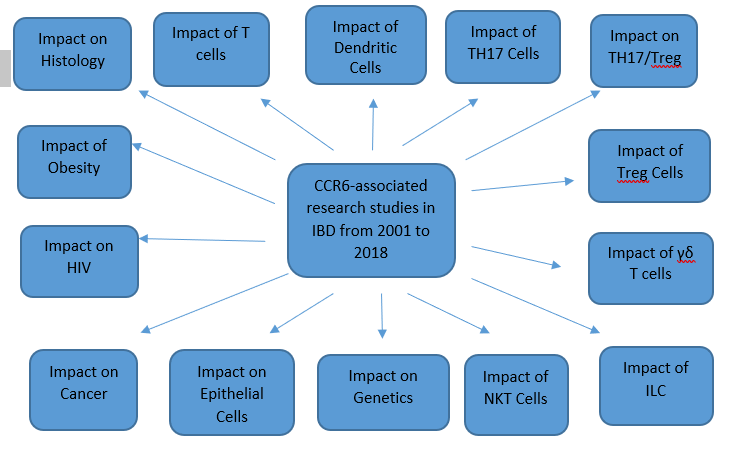Inflammatory bowel disease (IBD) is a CC chemokine receptor 6 (CCR6) - associated immune mediated disorder which has attracted an extensive superfluity of experimental analyses. IBD has come to the fore of varied scrutinizing owing to its complexity by nature for comprising of two synergistic sub phenotypes; Crohn’s disease (CD) and Ulcerative colitis (UC). Both these disease entities cause potent immune dysregulation followed by intense tissue damage within the gut mucosal system, initiating symptoms which are severely debilitating. Multiple causative factors are said to be responsible for IBD but direct immune dysfunction is kindled by overplay of innate and adaptive immune responses produced against a pathogenic microbial attack through the weakened or leaky gut epithelial barrier. Once immune homeostasis is not achieved by tolerating agents, the self-assertive adaptive immunity mobilize its various T and B cell cohorts initializing their allied immune mechanisms by vigorously deploying them towards the site of infection. CCR6 and its unique solitary ligand CC-chemokine ligand 20 (CCL20) are small protein molecules which are abundantly expressed by T and B lymphocytes and act as chemotactic immune-modulatory envoys that help in the deployment of the effector lymphocyte arm of the immune system, producing two directly opposing outcomes in IBD. This dichotomous immunity consists of either immune tolerance or inflammation which then develops into a chronic state, remaining catatonic to inherent immunity or targeted clinical therapy. In this review, we have chronologically identified a plethora of experimental studies radiating into 14 different compartments highlighted in the visual depiction which have employed both mouse models and clinical subjects spanning a period of nearly two decades. In doing so, we expect the research community would further benefit by tracing through the history, thereby understanding the CCR6 –CCL20 axis in IBD and identifying the gaps in literature which can be fortuitously filled in the future.

